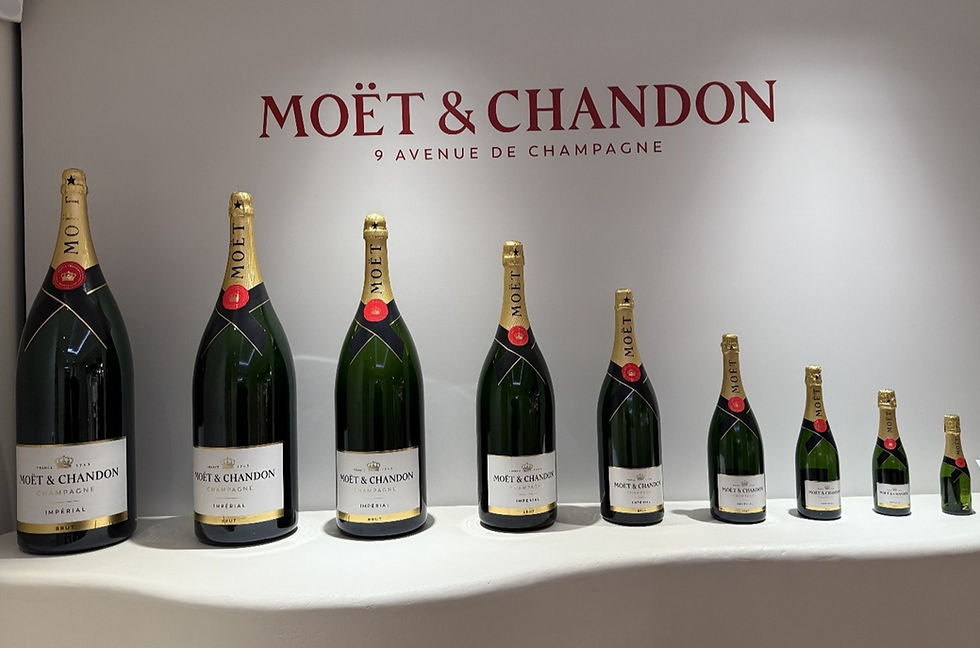3 Don’t-Miss Food Experiences in the Emilia-Romagna Countryside
- Marla
- Mar 30, 2023
- 3 min read
Updated: Apr 6, 2023

Bologna, Italy’s food scene is amazing.
But while one can sample the regional specialties without leaving the city, it’s more fun and educational to venture into the surrounding area to see firsthand how some of these regional specialties are made.
Here are three don’t-miss food experiences in the Emilia-Romagna countryside we recommend. To visit the food factories, you’ll likely need to sign up for a tour. We had the most fantastic day trip with Alessandro of Italian Days.
One of the side benefits of taking this tour is that breakfast and lunch were included, so we were able to sample a much wider variety of local fare than simply the three foods highlighted.
Since we were seeing food preparation up close, we were provided with special garments to wear. Let’s don our protective gear and go!
1. See How Parmigiana-Reggiano Cheese is Made
Our first stop was at a small cheese factory in the village of Castelvetro di Modena that produces only Parmigiana-Reggiano cheese. The requirements for production are very strict, and the cheese is made every morning, 365 days a year. It’s then aged for a year before it can officially be labeled Parmigiana-Reggiano. The end result is a wonderful, rich, lightly nutty hard cheese. Some of the cheese wheels are aged more than three years.
We enjoyed a comprehensive tour through all of the Cooperativo San Silvestro, where the master cheesemaker can tell by a touch of his hand when the cheese is ready for processing.

2. Sample Balsamic Vinegar at an Acetaia (Vinegar House)
We then visited a nearby balsamic vinegar maker, Antica Acetaia Cavedoni, a small family-run company in existence since 1860 and one of the oldest balsamic vinegar producers in Modena. Modena is the epicenter of balsamic vinegar production in Emilia-Romagna.

This family follows the tradition that when babies are born their name is engraved on several dedicated balsamic vinegar barrels; it is my understanding that they receive the barrels as a gift when they get married.
Our sit-down balsamic vinegar tasting was conducted while we were served an elaborate breakfast, which included salami, Parmigiana-Reggiano cheese aged both 24 and 36 months, sandwiches, pastries, pizza, and the freshest ricotta cheese from the cheese factory we just visited – the whey from the cheese made that morning. This was all washed down with espresso and Lambrusco, the slightly fizzy red wine produced in this region (who doesn’t like wine with breakfast 😊).
We learned a lot from owner Paolo Cavedoni, who walked us through the vinegar tasting. For example, good balsamic vinegar has only one or two ingredients, and thickness is not a marker of quality. This vinegar is not for cooking! One adds it to food.
We tried five different products:
· A five-year-old balsamic vinegar, recommended for salads and vegetables
· A seven-year-old one, a darker brown
· The “traditional,” the real balsamic of Modena aged 12-24 years, which tasted more woody and was recommended for steak and ice cream
· Balsamic vinegar aged a minimum of 25 years (we tasted one 32 years old) that is very thick and dark and also used as a digestive after meals
· “Saba” – a sweet reduction of grape juice with cloves and cinnamon, a family recipe that’s the region’s version of maple syrup and traditional to the area
This acetaia produces related products, as well. For instance, I purchased a balsamic vinegar with truffles that I’ve been indulging in.
3. Learn How Prosciutto is Produced

We were also floored by our visit to a nearby prosciutto factory. We enjoyed a thorough tour at Antica Prosciutteria Del Samoggia Il Lonzardo to see the ham’s production and aging process.
We then had an incredible three-course lunch in an adjacent building that included tigelle (local Emilia-Romagna flatbread) with tomato and balsamic vinegar and prosciutto with honey; three different types of pasta (tortellini with local sage and ricotta, tortelloni with mortadella and Parmigiana-Reggiano cheese, and lasagna Bolognese (the factory happily accommodated Jessie, who is pescatarian, and served her spinach lasagna); and tiramisu for dessert. Lunch was paired with three local wines: Pignoletto (a slightly fizzy white), a Rosé, and a Cabernet Sauvignon. Delizioso!
I hope that this guide to three must-do food experiences in the Emilia-Romagna countryside helps you plan your next visit there. Do you have any additional recommendations? Please share! We’re at info@winewithourfamily.com.
If you enjoyed this post, visit our website and take a look at some of our related articles:




Comments